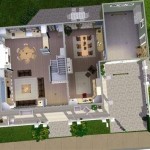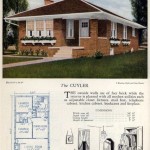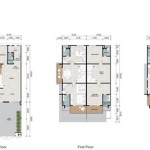Modern Farmhouse Table DIY Plans: A Guide to Creating a Stylish and Functional Centerpiece
A modern farmhouse table is a timeless and versatile piece of furniture that can be the focal point of any dining room or kitchen. Its clean lines, rustic charm, and durable construction make it perfect for both formal and casual gatherings. While purchasing a ready-made table can be expensive, building your own modern farmhouse table from scratch allows for a unique and personalized design that perfectly complements your home decor. This article will guide you through the process of creating a modern farmhouse table, providing step-by-step instructions and essential tips along the way.
1. Design and Planning
Before embarking on construction, it's crucial to spend time planning and designing your table. Consider its size, shape, and desired features.
Determine the table's dimensions. Measure the space where the table will be placed to ensure a comfortable fit for your needs. A standard dining table typically ranges from 6 to 8 feet in length, with a width of 3 to 4 feet. If you have a smaller space, consider a more compact table or a smaller table with extendable leaves.
Choose a table shape that complements your existing furniture and space. A rectangular table is a classic and versatile option, while round or oval tables offer a more intimate feel. Consider the table's height. A standard table height is 30 inches, but you can adjust this based on your personal preference and the height of your dining chairs.
Finally, plan the table's features, such as the number of legs, the style of the tabletop, and the type of finish.
2. Gathering Materials and Tools
Once you have a clear design in mind, gather the necessary materials and tools.
Materials:
- Lumber: Choose hardwood lumber like oak, walnut, or maple for durability and a natural, rustic aesthetic. Consider using reclaimed wood or salvaged lumber for added character and sustainability.
- Wood glue: Use a high-quality wood glue for strong and lasting bonds between wooden components.
- Screws: Purchase screws of appropriate length and size for attaching various parts of the table frame and tabletop.
- Wood filler: Fill any gaps or imperfections in the wood with wood filler before sanding and finishing.
- Wood stain or paint: Choose a stain or paint that complements your desired style and finish.
- Polyurethane or varnish: Apply a protective top coat to seal the wood and enhance its durability.
- Hardware: If you're using a table base kit, ensure you have all the necessary hardware, including bolts, washers, and nuts.
Tools:
- Measuring tape and pencil: For precise measurements and markups.
- Saw: A circular saw or hand saw to cut the lumber to the desired lengths.
- Drill with various drill bits: For drilling pilot holes and attaching hardware.
- Screwdriver: For driving screws securely.
- Sandpaper: For smoothing out the wood and removing any imperfections.
- Clamps: To hold the wood pieces together while applying glue and securing screws.
- Safety gear: Wear safety glasses, gloves, and a dust mask for protection.
3. Construction Process
Once you have gathered all the necessary materials and tools, you're ready to begin the construction process.
Constructing the Base:
- Cut the lumber for the legs and rails of the base according to your plans.
- Join the legs and rails using wood glue and screws. Ensure the joints are strong and secure.
- Sand the base to smooth out any rough edges and prepare it for finishing.
- Add any desired decorative details to the base, such as aprons or cross-bracing.
Creating the Tabletop:
- Cut the lumber for the tabletop according to your design. If you are using multiple wood boards, ensure they are properly aligned and joined to create a seamless surface.
- Use wood glue and screws to secure the tabletop boards to the base, ensuring a smooth and level surface.
- Sand the tabletop to smooth out any rough edges and prepare it for finishing.
- Apply a wood filler to any gaps or imperfections in the tabletop.
- Sand the tabletop again to achieve a smooth and uniform surface.
Finishing the Table:
- Choose a stain or paint color that complements your desired style and finish. Apply a thin and even coat of stain or paint to both the base and the tabletop.
- Allow the stain or paint to dry completely before applying a protective top coat.
- Apply a polyurethane or varnish to seal the wood and enhance its durability. Use multiple thin coats of polyurethane or varnish for optimal protection.
- Let the top coat dry completely before using the table.

How To Build A Modern Farmhouse Dining Table

Modern Farmhouse Dining Table Benches Erin Spain

Diy Modern Farmhouse Dining Table Kreg Tool

Diy Farmhouse Table Free Plans Rogue Engineer
Modern Farm Table Ana White

Project Modern Farmhouse Table Front Life

Diy Farmhouse Table Free Plans Rogue Engineer

Diy Modern Farmhouse Table Top East Coast Creative

Benchright Industrial Farmhouse Table Ana White

Diy Modern Farmhouse Coffee Table Plans Fix This Build That








